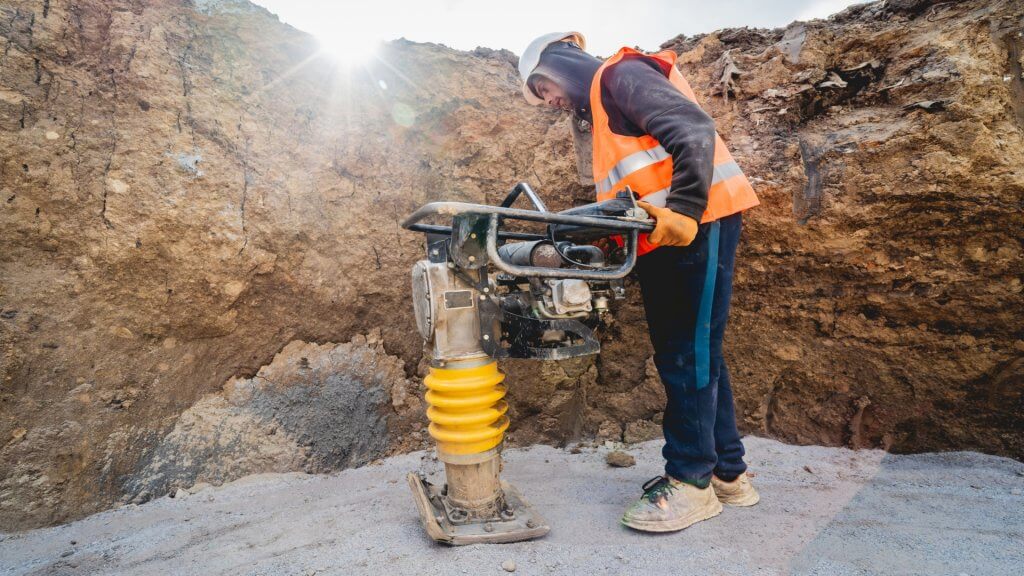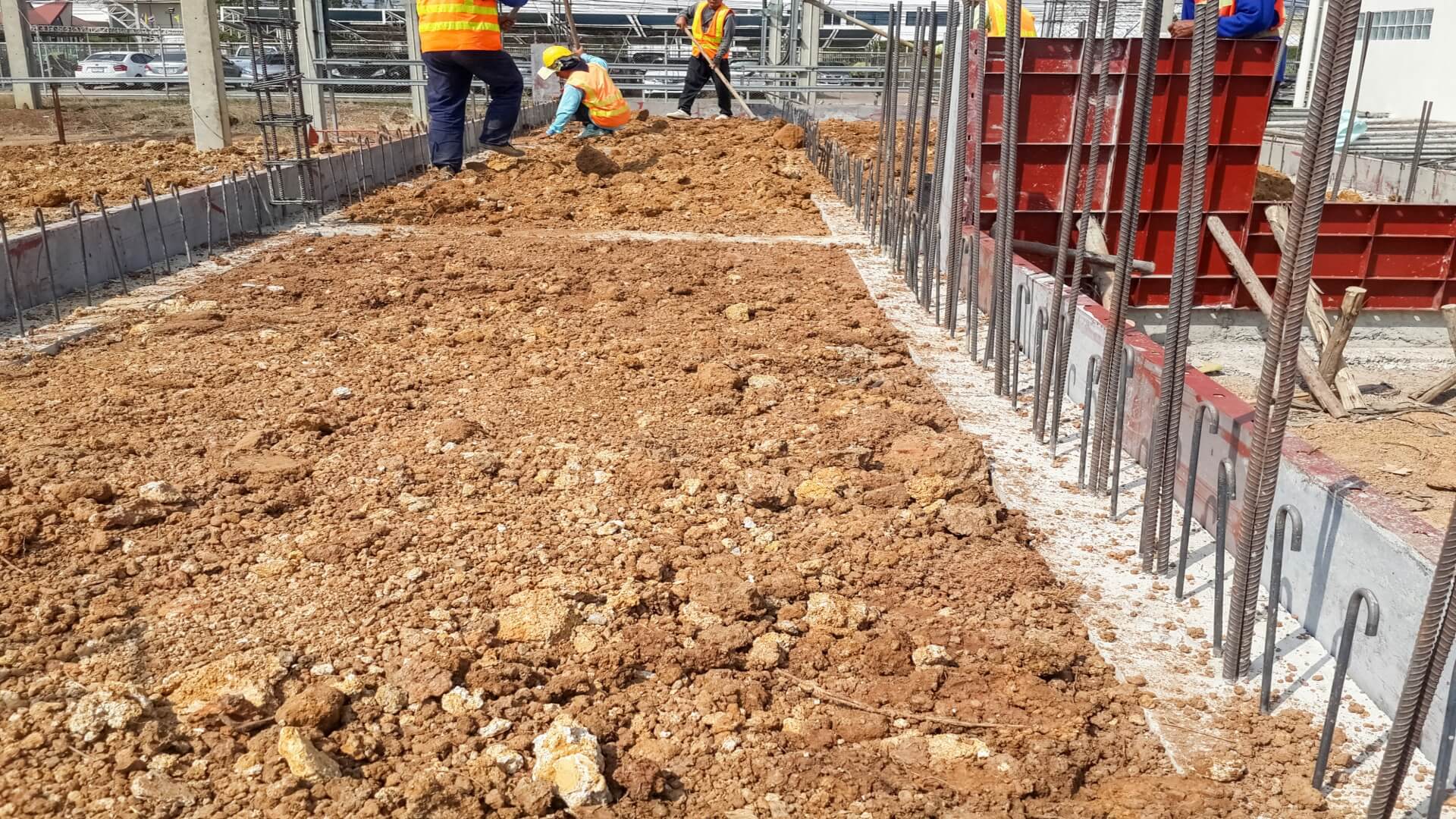Compaction, with its roots traced back to ancient civilizations, is the unsung construction hero. It is responsible for the strength and resilience of roads, buildings, and bridges. Compaction ensures the ground beneath these infrastructures remains stable, robust, and capable of supporting the immense weight and stresses they impose.
However, despite its crucial role, compaction’s significance is often overlooked. A deeper exploration of its complexities reveals its multifaceted contribution to construction, underpinning structures with stability and sustainability.
The Science Behind Compaction
As a material, soil consists of solids, liquids, and gases. When compaction occurs, the air volume in the soil decreases while the density of the soil particles increases. This results in soil that has enhanced strength and decreased permeability.
Proper compaction reduces voids in the soil, meaning less space for water to seep through, thus decreasing potential issues like erosion or settlement over time.
Beyond just the physical act, compaction demands a comprehensive understanding of soil types. Different soils, from clay to sand to silt, have distinct compaction requirements. Using the wrong method or failing to recognize the soil type can lead to ineffective compaction, jeopardizing the entire project.
Moreover, advancements in technology, as highlighted in an article from Powertech Machinery, now allow for precision in this process. With modern machinery and techniques, it’s possible to achieve optimal compaction levels tailored to the specific requirements of any construction project, ensuring long-lasting results.
Foundation And Stability
Compaction is central in stabilizing structures by preparing the ground for construction. When soil or aggregate is compacted, it decreases the void spaces, making the ground denser and more resistant to external pressures. This firm foundation is crucial, especially for large structures where the weight distribution needs to be even.
A well-compacted base also ensures that there is no uneven settling of the structure over time, which could lead to cracks or instabilities in the building. Therefore, prioritizing proper compaction at the foundational level is integral to the longevity and safety of any construction project.
Lastly, a solid foundation ensures better distribution of loads. Whether it’s a multi-storied building, a bridge, or a simple pathway, uniform pressure distribution is paramount. An even spread of weight ensures the structure can sustain the intended load, preventing any unexpected failures.
Water Management
One of the major challenges in construction is dealing with water. A poorly compacted surface can allow water to seep through, leading to erosion, foundation weakening, and other structural damage. On the other hand, properly compacted soil acts as an effective barrier against water infiltration, significantly reducing these risks.
Water penetration can freeze during colder temperatures, leading to expansion. When this frozen water thaws, it contracts. This freeze-thaw cycle can create cracks and weaken structures. Proper compaction provides resistance against such infiltration, protecting the construction from potential damage to water expansion and contraction.
Moreover, effective water management is not just about keeping it out. For road construction, well-compacted surfaces ensure proper drainage, preventing the pooling of water, which can lead to hazards for commuters. Thus, through compaction, both buildings and roads can efficiently manage water, ensuring durability and safety.
Cost-Efficiency
While there might be costs associated with ensuring proper compaction, in the long run, it proves to be a cost-effective choice. A well-compacted ground means less maintenance and repair work in the future, translating to significant savings for property owners.
Proper compaction reduces the chances of structural damages like cracks, potholes, or subsidence. Such issues demand costly repairs and might lead to longer downtimes for facilities or infrastructure, affecting productivity or utility.
Furthermore, a compacted surface also ensures efficient utilization of materials. Instead of adding or replacing materials frequently due to wear and tear, a denser base lasts longer. In the grand scheme of construction economics, investing in compaction can save a considerable amount of money in potential future damages and repairs.
Sustainability
Sustainability is a growing concern in all industries, and construction is no exception. Compaction aids in making construction more environmentally friendly. Providing a dense foundation reduces the need for additional raw materials, which often involve extensive extraction and transportation, both of which have environmental costs.
Furthermore, well-compacted surfaces have better water management capabilities, as mentioned earlier. This means there is less chance of water run-off carrying pollutants or sediments into natural water bodies, preserving the ecological balance.
Lastly, when construction lasts longer due to better compaction, it reduces the frequency of redevelopment or repairs. This means less construction waste, fewer emissions from machinery, and reduced energy consumption over the structure’s lifecycle, contributing to a greener planet.
Conclusion
Compaction, while often overlooked in the broader scope of construction, is a backbone to structures’ stability, durability, and functionality. From providing a steadfast foundation to ensuring cost-efficiency and environmental sustainability, the benefits of compaction permeate every aspect of construction.
As the industry evolves, recognizing and investing in this foundational process becomes imperative to ensure structures stand the test of time, both functionally and sustainably.


































